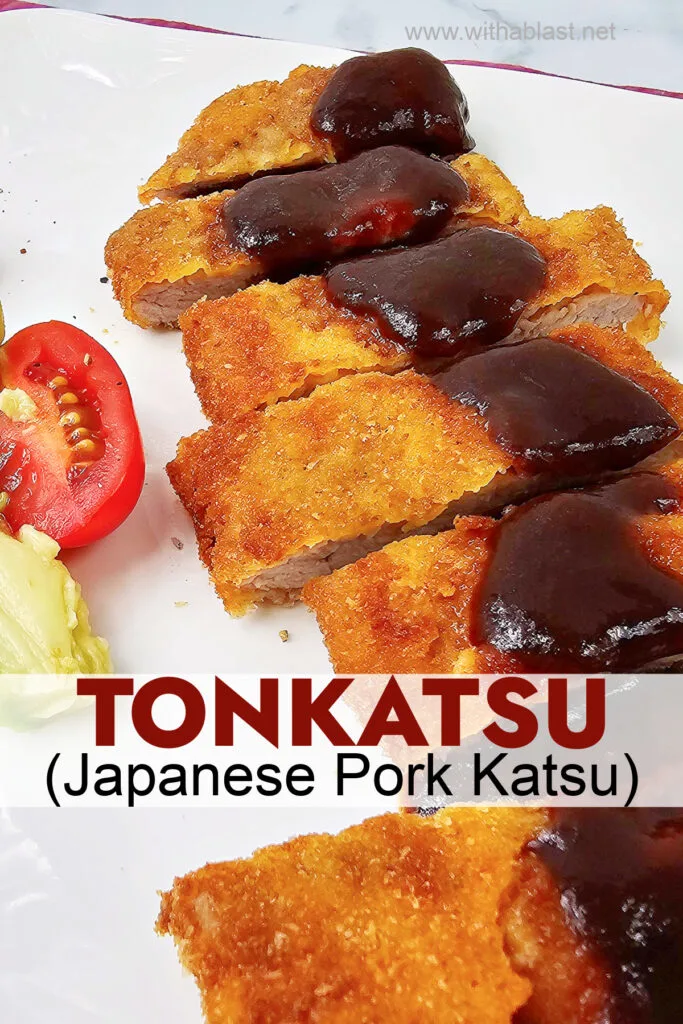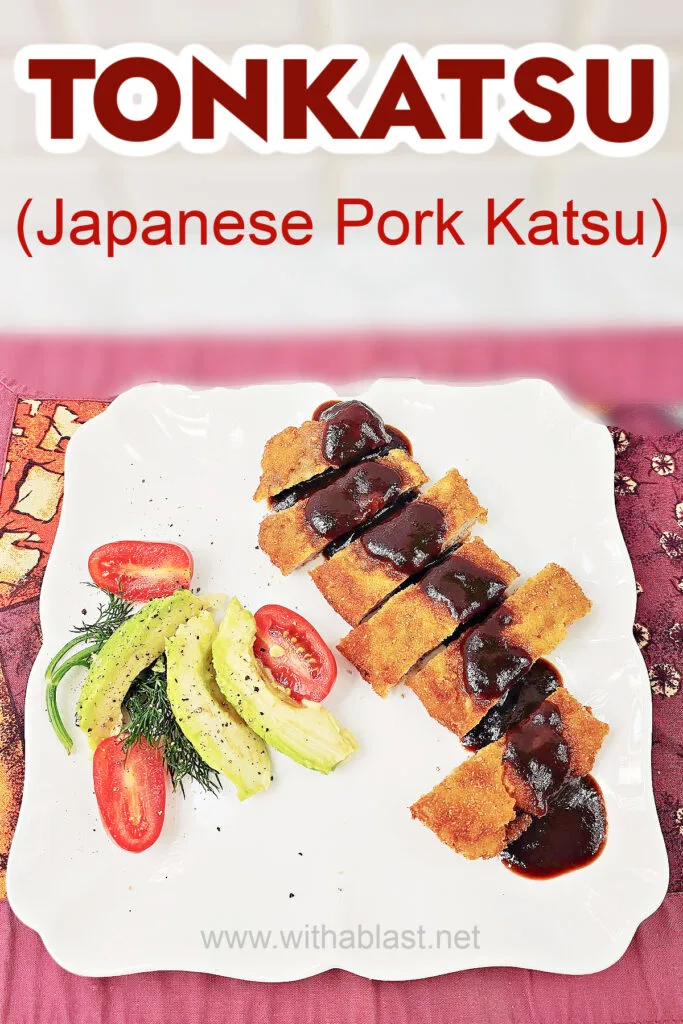Savor the crunch with our authentic Tonkatsu recipe! Make this classic Japanese breaded pork cutlet, served with a tangy sauce. Perfect for a family dinner or impressing guests with your culinary skills. Get ready for a mouthwatering experience!
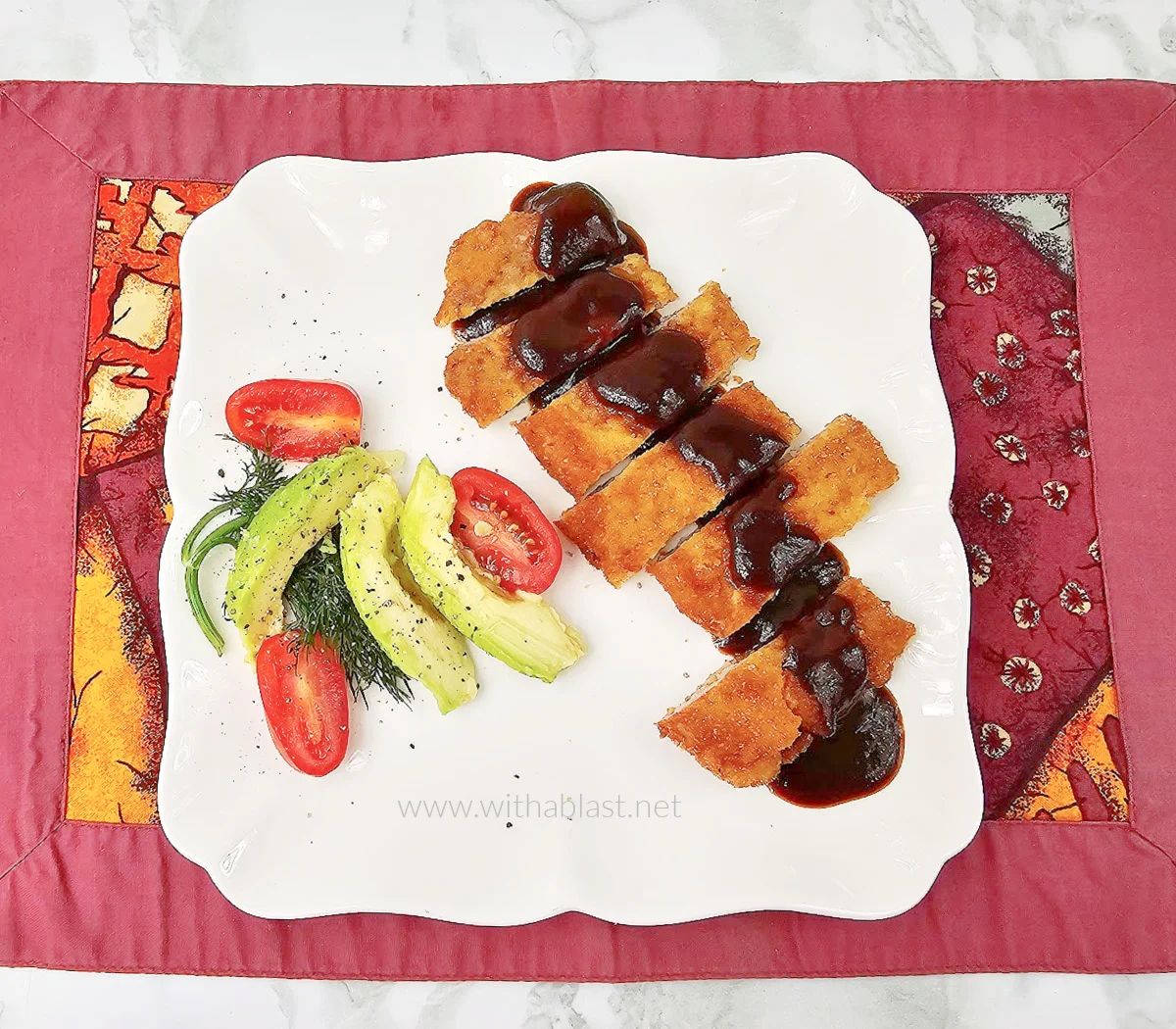
What is Tonkatsu ?
Tonkatsu, a beloved Japanese dish, is a testament to the way Japan has adapted and evolved its cuisine through external influences. Originating from the yoshoku tradition, which itself is a style of Western-influenced cooking, tonkatsu consists of a breaded, deep-fried pork cutlet.
Historically, this dish has its roots in the Meiji era when Japan opened its doors to Western influence. One could argue that the dish is a local adaptation of Western schnitzels, tailored to suit the Japanese palate. It represents a melding of cultures on a plate – a piece of Japan’s culinary dialogue with the West.
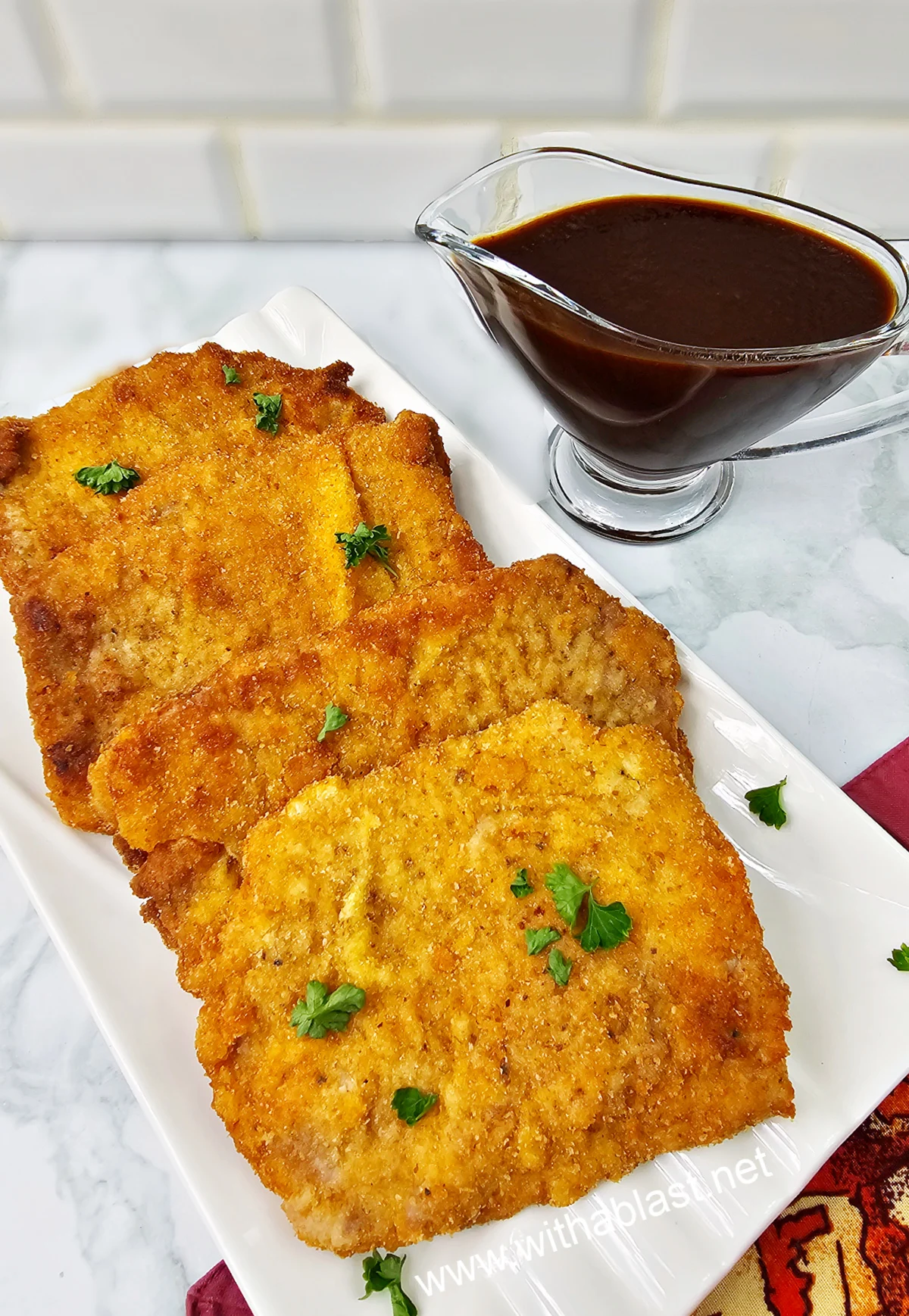
Easy to make !
I love the simplicity of Tonkatsu’s preparation. Starting with a pork tenderloin, salt and pepper are applied for basic seasoning. The tenderloin is then dredged in flour, dipped in beaten eggs, and finally coated in panko crumbs, the Japanese-style breadcrumbs known for their lighter, crisper texture.
The coated pork cutlet is then submerged in oil and fried to perfection. The result is a cutlet with a golden, crispy exterior and a tender, juicy interior that is so delicious !
Tonkatsu Sauce Ingredients:
What really sets tonkatsu apart is the sauce. My tonkatsu sauce combines Worcestershire sauce, thick ketchup, a touch of sugar, oyster sauce, and a squeeze of lemon juice.
This rich, tangy sauce with just the right sweetness complements the crunch of the panko and the savory pork, creating a harmonious balance that elevates the dish from simple fried food to a comforting staple of Japanese cuisine.
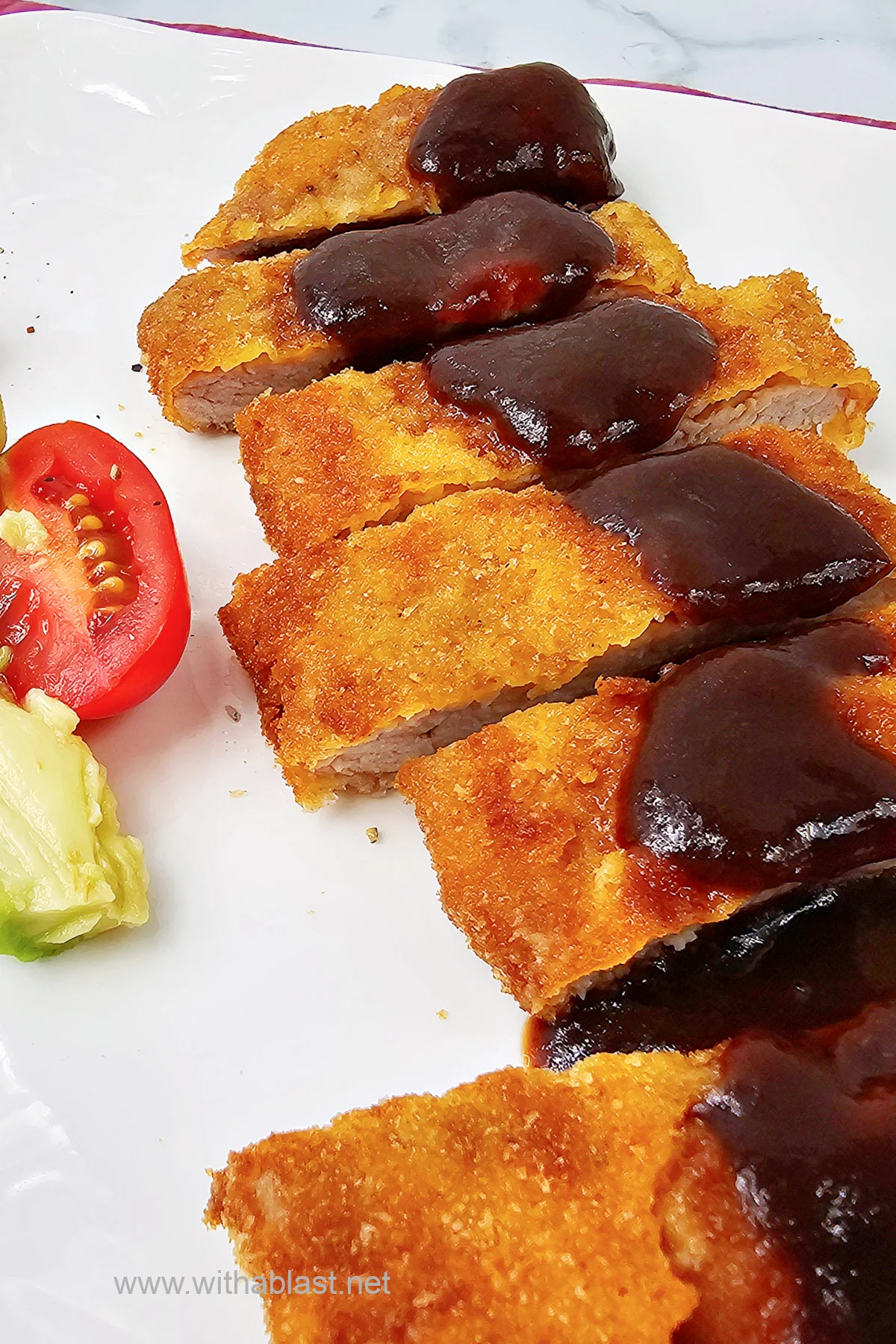
Origins and Variations
In this section, I will guide you through the roots of tonkatsu and its cultural significance, the distinction between tonkatsu and Korean donkatsu, as well as the intriguing adaptations of tonkatsu in Japanese cuisine.
Origins of Tonkatsu
Tonkatsu finds its beginnings in Japan during the late 19th century, emerging from the Meiji era’s penchant for Western dishes. Introduced as katsuretsu (a Japanese term derived from “cutlet”), its name eventually evolved; “ton” means pork, and “katsu” is short for katsuretsu.
The dish was first served in Tokyo at a Western-style restaurant named Rengatei in 1899, geared towards introducing the Japanese palate to European cuisine, specifically the schnitzel, its meaty predecessor.
Difference between Tonkatsu and Donkatsu
Tonkatsu should not be mistaken for the similar-sounding Korean dish Donkatsu. While both dishes center on a breaded and deep-fried cutlet, donkatsu often comes drenched in a variety of sauces and may accompany different side dishes compared to the traditional Japanese tonkatsu. Which is classically served with a simple but flavorful tonkatsu sauce, shredded cabbage, and a side of rice.
Variations of Tonkatsu
Variations of tonkatsu encompass a delicious array. Chicken katsu substitutes the pork for chicken while retaining the essential cooking method. Another popular variant is miso katsu, primarily enjoyed in the Nagoya region, using red miso-based sauce instead of the typical tonkatsu sauce.
The preparation involves tender pork loin seasoned with salt and pepper, coated in flour, dipped in beaten eggs, rolled in panko crumbs for that characteristic crunch, and fried until golden brown.
The classic sauce, a distinctive blend, marries Worcestershire sauce, thick ketchup, sugar, oyster sauce, and a touch of lemon juice to offer the perfect balance of sweet, savory, and tangy that complements the cutlet splendidly.
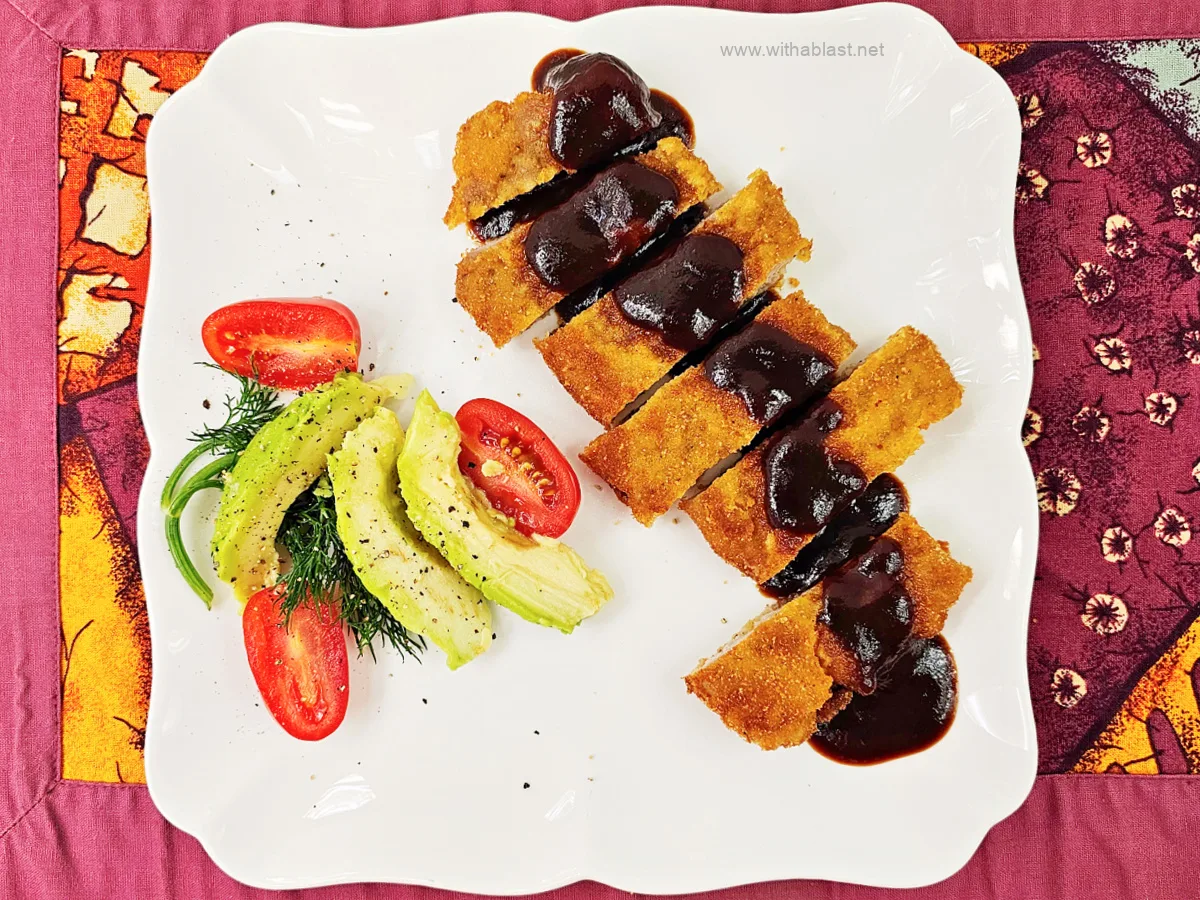
Preparing and Serving Tonkatsu
When I make Tonkatsu, my goal is to achieve a juicy, tender cutlet with a crispy, golden coating. The right balance of seasoning and careful frying is important, paired with a tangy, homemade Tonkatsu sauce.
How to Make Air Fried Tonkatsu
To prepare Air Fried Tonkatsu, I start with pork tenderloin, cutting it into schnitzel-like slices. Before breading, it is important to season the pork with salt and pepper for taste.
I then proceed with the standard breading procedure, dredging each piece in all-purpose flour, dipping it into beaten eggs, and finally coating it with panko breadcrumbs. I always make sure that the pork is evenly coated to prevent any areas from becoming soggy.
Preheat your air fryer to 200°C / 400°F which I have found is the optimal temperature to ensure a crunchy outside without overcooking.
Lightly oil the breaded pork pieces to help achieve that desirable golden-brown crust and place them in the air fryer basket, ensuring they do not overlap.
It typically takes about 12 minutes to cook, and I suggest flipping the cutlets halfway through to ensure an even crispiness. Once they are golden and have reached an internal temperature of 62.8°C / 145°F, let them rest for a few minutes to maintain their tenderness.
What to Serve with Tonkatsu
I have found that Tonkatsu is best complemented by a simple shredded green cabbage salad or an Apple Slaw, which provides a refreshing crunch and balances the richness of the fried dish.
Traditionally, this dish is served with steamed rice and Tonkatsu sauce. To prepare the sauce, I combine Worcestershire sauce, thick ketchup, a bit of sugar, and oyster sauce. The exact proportions are in the printable recipe card below.
For a full meal, Tonkatsu can also be part of a set with miso soup, a bowl of ramen, or transformed into katsudon by topping a bowl of rice with the cutlet and an egg.
Or even into a katsu sando—a delicious Japanese pork cutlet sandwich. And if I am in the mood for something more substantial, I pair it with Japanese curry for a treat.
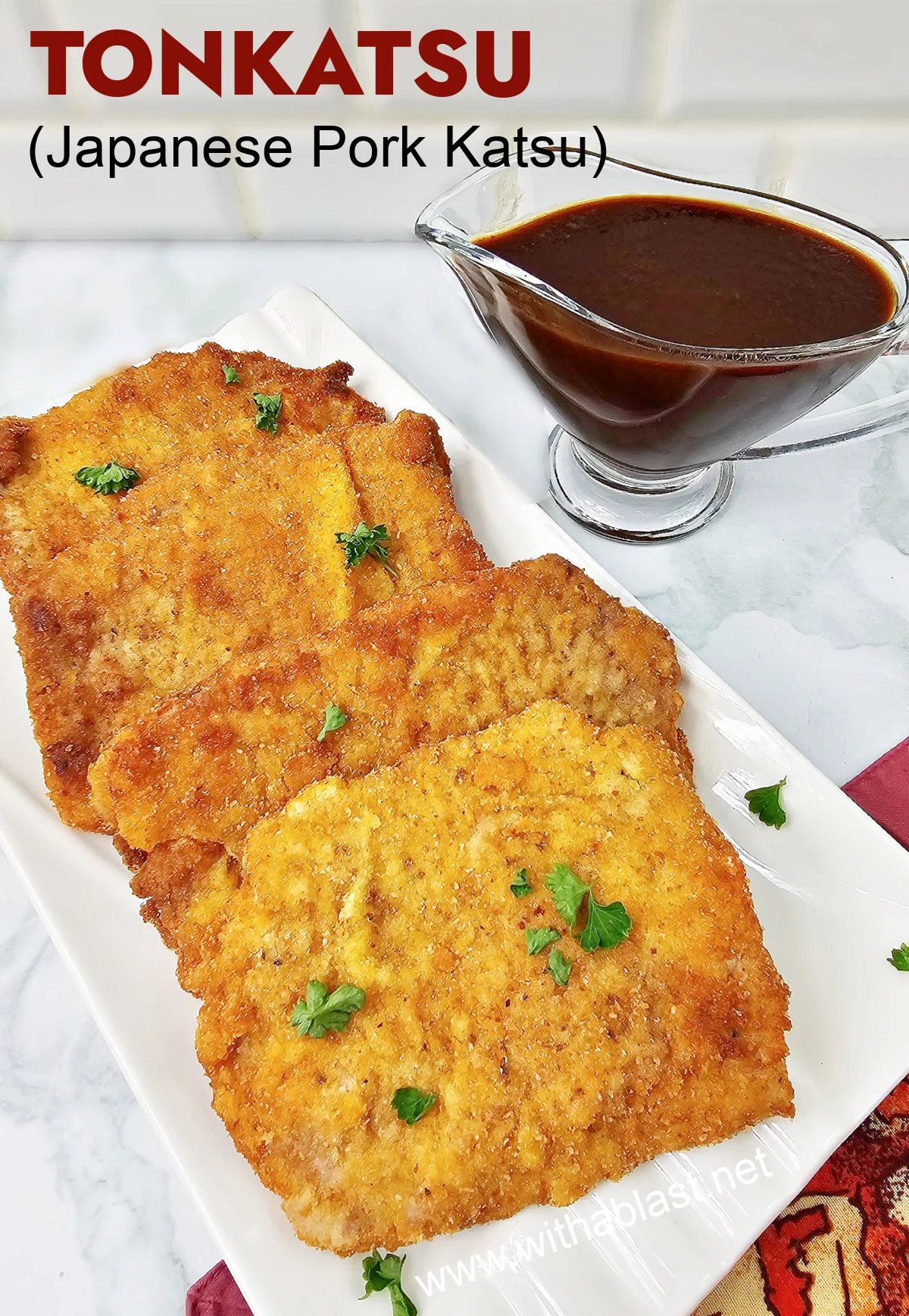
Frequently Asked Questions
How do you prepare a traditional Japanese Pork Katsu dish?
I start by seasoning slices of pork tenderloin with salt and pepper. Then, I dip the seasoned pork in flour and beaten eggs. Ending with a coat of Panko crumbs for that delightful crunch.
The breaded pork cutlets are deep-fried in oil until golden brown and served piping hot.
What makes Tonkatsu different from other katsu dishes?
Tonkatsu is uniquely Japanese, known for its use of pork tenderloin or loin. The main difference is in the meat choice and the method of breading with Panko crumbs. Which gives it a light and crispy texture, as opposed to the heavier breading found in other schnitzel variations.
Can Katsu be made with chicken, and if so, what are the variations?
Yes, I can prepare Tonkatsu using chicken instead of pork. When using chicken, it’s referred to as Chicken Katsu. It follows the same preparation steps. But substitutes the pork for chicken breast or thigh, maintaining the dish’s beloved crispy texture and savory flavor profile.
More Pork recipes you might like:
Tonkatsu (Japanese Pork Katsu)
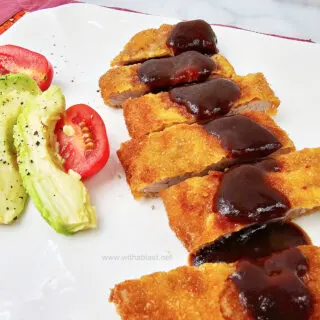
Tonkatsu (Japanese Pork Katsu)
Ingredients
Tonkatsu Sauce
- ⅓ cup Worcestershire Sauce
- ⅓ cup Ketchup thick
- 2 teaspoons Sugar
- 2 teaspoons Oyster Sauce
- Lemon Juice to taste
Pork Schnitzels
- 6 150 grams Pork Tenderloin Cutlets (see note below)
- Salt and Black Pepper
- 2 extra-large Eggs lightly beaten
- Flour for coating
- 2 cups Panko Crumbs (or regular bread crumbs)
- Vegetable Oil for shallow frying
Instructions
Tonkatsu Sauce
- Heat all the Sauce ingredients for about one minute, stirring continuously - set aside.
Pork Schnitzels
- Season pork schnitzels with salt and black pepper - coat well in flour.
- Dip in egg and coat with panko crumbs. Refrigerate for 15 minutes to set.
- Heat about 1 cm / ½ inch of vegetable oil in a large skillet and fry the schnitzels about 3 minutes per side or until done and golden.
- Remove from skillet and drain on paper towels. Serve drizzled with the sauce.
Notes
- To make schnitzels from tenderloin, simply slice a 900 grams / 2 pounds loin into 6 pieces - place the pieces of pork between baking paper and pound with a meat hammer until the desired size and thickness
- Air fryer Tonkatsu directions in post
- Serve the schnitzels whole or as custom, sliced into pieces as per the photos

